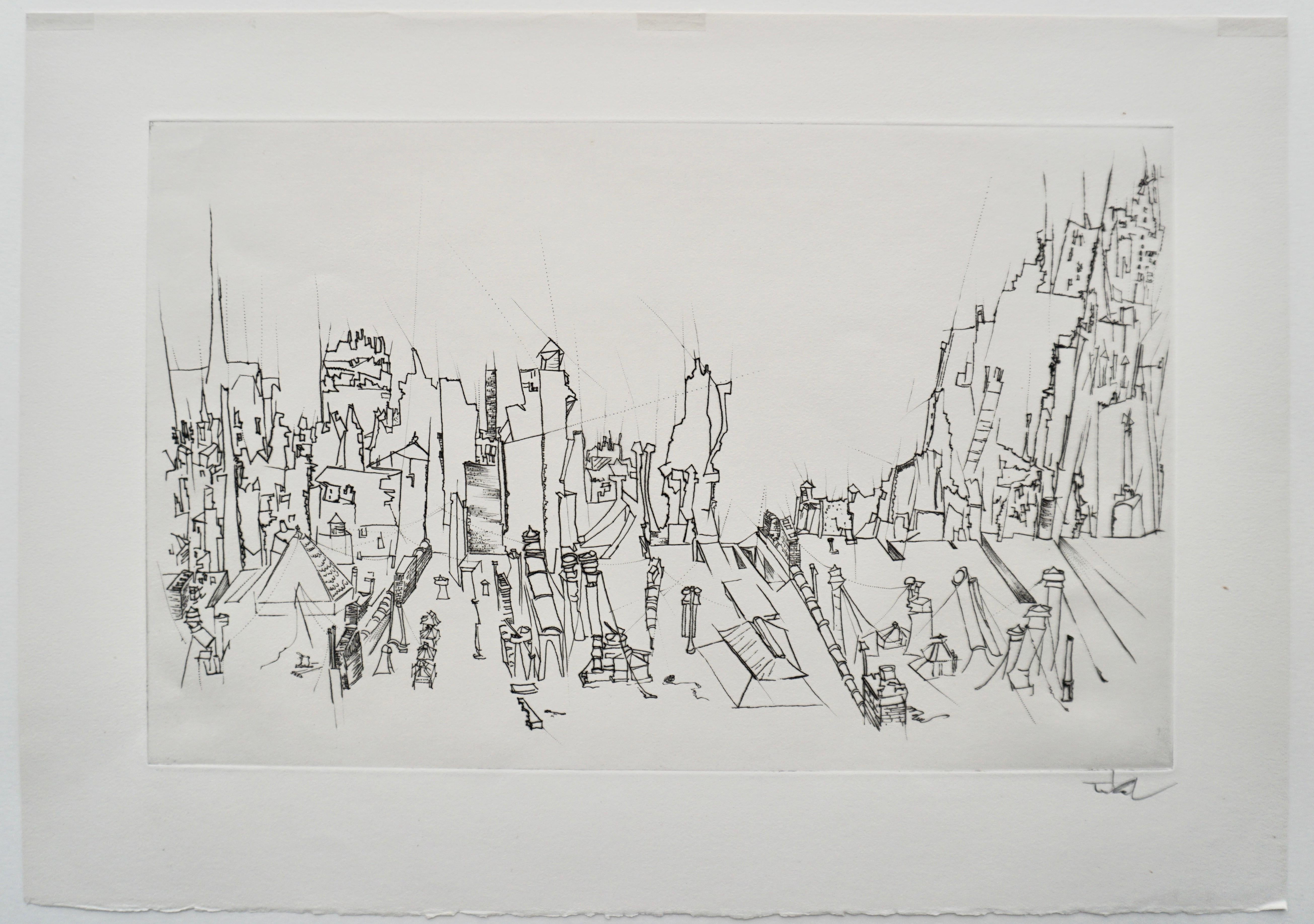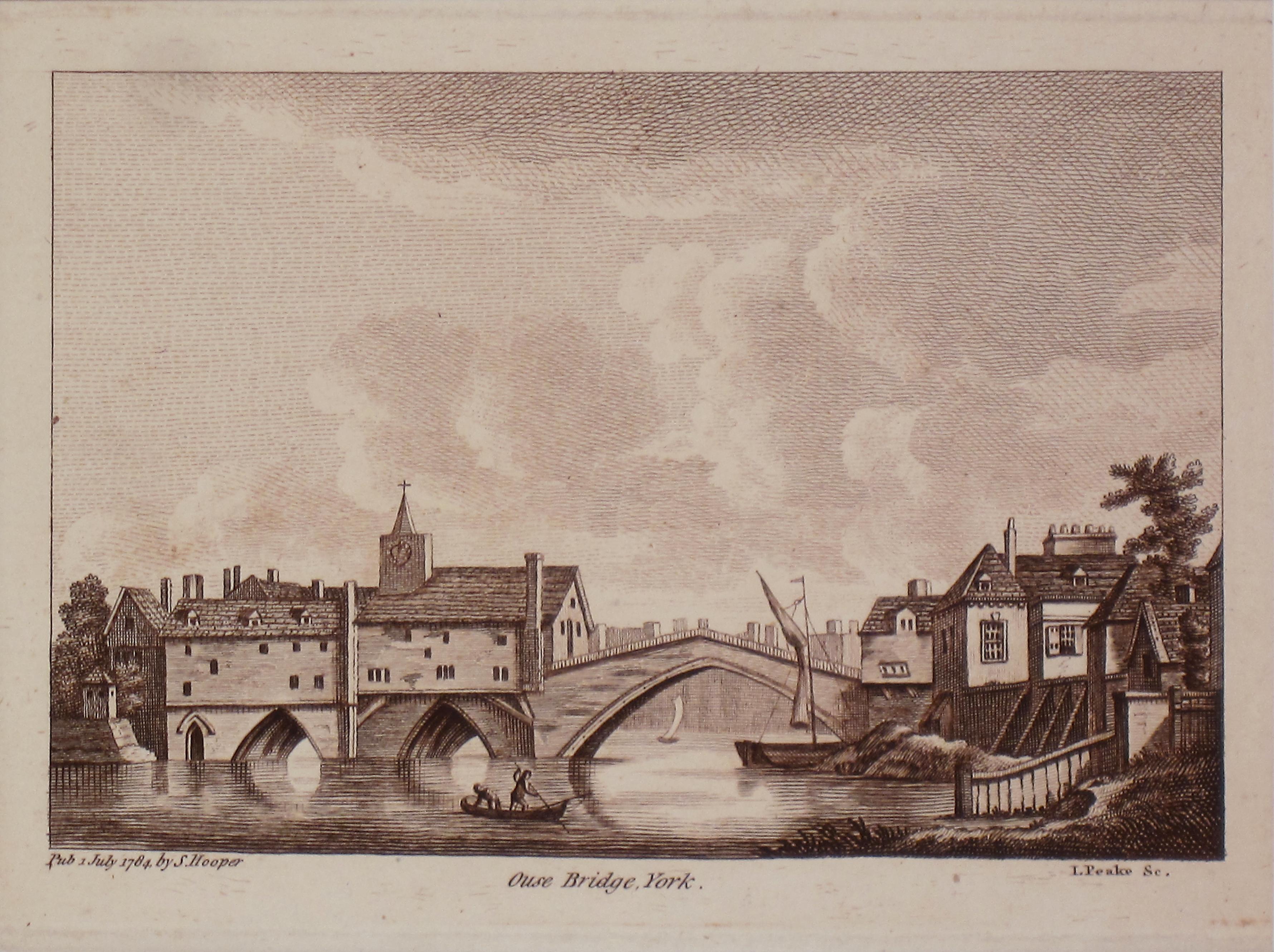Items Similar to Paysage à Asquins by Paulémile Pissarro - Wood Engraving Print
Want more images or videos?
Request additional images or videos from the seller
1 of 4
Paulémile PissarroPaysage à Asquins by Paulémile Pissarro - Wood Engraving Print
About the Item
*UK BUYERS WILL PAY AN ADDITIONAL 20% VAT ON TOP OF THE ABOVE PRICE
SOLD UNFRAMED
Paysage à Asquins by Paulémile Pissarro (1884 - 1972)
Wood engraving
9.7 x 15.5 cm (3 ⁷/₈ x 6 ¹/₈ inches)
Signed lower right, Paulémile-Pissarro, titled and numbered lower left, 2/5 No 14
Artist's Biography
Paulémile Pissarro, Camille Pissarro’s youngest son, was born in Éragny in 1884 where he was brought up within the creatively fertile environment of his family home and, encouraged by his father, began drawing at an early age. Paulémile’s godfather was Claude Monet, who became his teacher and legal guardian after Camille’s death in 1903.
In 1905 Paulémile exhibited at the Salon des Indépendants for the first time. Although his father had supported Paulémile’s desire to be an artist, his mother was eager for him to learn a more practical trade. Therefore in 1908 he put aside his artistic pursuits to work as an automobile mechanic and test-driver, then later as a lace and textile designer, allowing him only a limited time to paint. Paulémile only fully dedicated himself to painting following a letter from his brother Lucien in London, who wrote to invite him to take part in an exhibition held in London. Subsequent to the successful sale of a number of watercolours he had sent over, the young artist became inspired to leave the textile factory and pursue a career in art.
By the 1920s Paulémile had become an established Post-Impressionist artist in his own right, spending the summer months escaping from Paris on painting trips with fellow artists Kees Van Dongen, Raoul Dufy, Maurice de Vlaminck and André Dunoyer de Segonzac. In 1922 Paulémile purchased a house in Lyons-la-Forêt, a small village within the region of his hometown of Éragny and Giverny, where he moved in with his first wife Berthe Bennaiche. During this time, he developed a form of Cubism inspired by Paul Cézanne whom he dearly admired, creating some wonderful paintings of the river Eure and its surrounding villages. There he formed a close friendship with his neighbour, the famous Art Deco designer Émile-Jacques Ruhlmann, who designed a stunning Art Deco studio for Paulémile adjacent to his house.
In 1930 he visited and fell in love with the Swiss Normandy area in the Calvados region, in particular the River Orne which runs through the valley adjacent to the villages of Clécy and St. Remy. The combination of rolling hills, bold meadows and the calm river weaving its way through the landscape offered Paulémile a new burst of inspiration. With his second wife Yvonne Beaupel, Paulémile eventually moved to Clécy in 1935, where he would remain for the rest of his life. Of their three children, both H. Claude and Yvon also became artists.
With his house backing on to the river Orne, Paulémile developed a new way of working using a boat as a floating studio, where he spent countless days painting the calm waters from between the riverbanks. Here the influence of his godfather Claude Monet became apparent, particularly in Paulémile’s depiction of water, which was revolutionised by the Impressionist icon. He also applied Monet’s lessons in horticulture to the creation of an abundant garden, offering him many more motifs for his new paintings. Alongside these river landscapes, he also painted the neighbouring hay fields, various snow scenes, some interiors and still lives. The most ambitious work in his oeuvre was a fresco painted on all four walls of his own dining room, depicting the adjacent river in which he includes family members, neighbours and friends.
In 1967 Paulémile had his first one-man show in the United States at Wally Findlay Galleries in New York. This led to widespread recognition and a degree of professional success that few Pissarro artists knew during their lifetime. Since his death in 1972, Paulémile remains one of the best known of Camille’s sons.
- Creator:Paulémile Pissarro (1884 - 1972, French)
- Dimensions:Height: 3.82 in (9.7 cm)Width: 6.11 in (15.5 cm)
- Medium:
- Period:
- Condition:
- Gallery Location:London, GB
- Reference Number:1stDibs: LU261212622882
About the Seller
5.0
Recognized Seller
These prestigious sellers are industry leaders and represent the highest echelon for item quality and design.
Platinum Seller
These expertly vetted sellers are 1stDibs' most experienced sellers and are rated highest by our customers.
Established in 1964
1stDibs seller since 2015
95 sales on 1stDibs
Typical response time: 4 hours
Associations
Society Of London Art Dealers
- ShippingRetrieving quote...Ships From: London, United Kingdom
- Return PolicyA return for this item may be initiated within 7 days of delivery.
More From This SellerView All
- Effet de pluie by Camille Pissarro - Landscape etchingBy Camille PissarroLocated in London, GBEffet de pluie by Camille Pissarro (1830-1903) Etching, aquatint and drypoint 15.9 x 21.3 cm (6 ¹/₄ x 8 ³/₈ inches) Stamped with initials C.P. lower left and numbered 7/14 lower righ...Category
1870s Impressionist Landscape Prints
MaterialsDrypoint, Etching, Aquatint
- Kerfany by Ludovic-Rodo Pissarro - Wood engravingBy Ludovic-Rodo PissarroLocated in London, GBKerfany by Ludovic-Rodo Pissarro (1878-1952) Wood engraving 10.9 x 13.9 cm (4 ¹/₄ x 5 ¹/₂ inches) Initialled and titled in the plate Signed lower right, Ludovic Rodo and numbered low...Category
20th Century Post-Impressionist Landscape Prints
MaterialsEngraving
- Le Village de Landel by Paulémile Pissarro - etchingLocated in London, GBSOLD UNFRAMED Le Village de Landel by Paulémile Pissarro (1884 - 1972) Etching 17.2 x 23.7 cm (6 ¾ x 9 ⅜ inches) Signed lower right, Paulémile-Pissarro and numbered lower left, 2e e...Category
20th Century Post-Impressionist Landscape Prints
MaterialsEtching
- Jardin de la Villa à Brantôme by Paulémile Pissarro - Etching PrintLocated in London, GB*UK BUYERS WILL PAY AN ADDITIONAL 20% VAT ON TOP OF THE ABOVE PRICE Jardin de la Villa à Brantôme by Paulémile Pissarro (1884 - 1972) Etching 20.5 x 28.5 cm (8 ⅛ x 11 ¼ inches) Sign...Category
20th Century Landscape Prints
MaterialsEtching
- Veronique on the Pass by Lélia Pissarro - Coloured etchingBy Lelia PissarroLocated in London, GBVeronique on the Pass by Lélia Pissarro (b. 1963) Coloured etching 9.5 x 12 cm (3 ³/₄ x 4 ³/₄ inches) Signed lower left, Lélia Pissarro Numbered lower right, 1/15 Artist biography: Born in Paris in 1963, Lélia is the third and youngest child of Hugues-Claude and Katia Pissarro...Category
21st Century and Contemporary Landscape Prints
MaterialsColor, Etching
- Series - South of France by Lélia Pissarro, SerigraphBy Lelia PissarroLocated in London, GBSeries - South of France by Lélia Pissarro (B. 1963) Serigraph Image Size: 38 x 48 cm (15 x 19 inches) Sheet Size: 48 x 59 cm (18 ⅞ x 23 ¼ inches) Signed and numbered Printed in an edition of 300 SOLD UNFRAMED Artist's Biography Born in Paris in 1963, Lélia is the third and youngest child of Hugues-Claude and Katia Pissarro...Category
21st Century and Contemporary Impressionist More Prints
MaterialsScreen
You May Also Like
- “City Roofs” drypoint engraving by Peter TakalBy Peter TakalLocated in Berlin, MDPeter Takal’s original drypoint engraving “City Roofs” is an accomplished work of art created in 1956. It is printed upon fine laid paper with full deckled margins as published in the limited edition of two hundred and fifty impressions. This engraving bears an embossed stamp “The Print Club of Chicago” on verso. This impression is signed by Takal in pencil. “City Roofs” is a fine example of the engraved art created by the 20th century Romanian / German / American artist, Peter Takal. Peter Takal: Born in Romania in 1905, Peter Takal spent most of his youth in Berlin and was mainly self-taught. His first one-man exhibition took place in the Gurlitt Gallery, Berlin, in 1932. During the following seven years his art was frequently exhibited at galleries in Berlin, Munich, Paris and as well as Casablanca and Algiers. At the beginning of the Second World War (1939), Peter Takal came to the United States for an exhibition of his art at the Katherine Kuhe Gallery, Chicago. He decided to remain in the United States and became an American citizen in 1944. Living in New York, Peter Takal quickly established himself as a leading printmaker and a modern master of both lithography and drypoint engraving. One-man exhibitions of his art took place in New York City (1942), Chicago (1939 & 1941), Washington (1959) and Los Angeles (1966). International exhibitions of his art were held at the Galeria de Arte Mexicano, Mexico City (1959), the Palazzo Strozzi, Florence, Italy (1960) and at the Kestner-Museum in Germany (1962). Museums to date that include Peter Takal's original prints in their collections are, the Chicago Art Institute, the Library of Congress, Washington, the Los Angeles County Museum of Art, the United States State Department, UCLA, the Berlin National Museum and the Bibliotheque Nationale, Paris. Over the years, the Museum of Modern Art in New York and the Arkansas Arts Center have acquired a very extensive collection of Peter Takal's lithographs and drypoints. The artist died in 1995. The Print Club of Cleveland: Trees and Fields is an original lithograph commissioned by the Print Club of Cleveland in 1957 and published in a signed edition of 250 impressions. The Print Club of Cleveland is a non-profit adjunct organization and the country's first museum-affiliated print club devoted to the promotion of art and printmaking as a fine art for printmakers and collectors alike. With its creation in 1919, it has helped to support the growth of the department of prints and drawings at the Cleveland Museum of Fine Arts and has also been a source of great enrichment for collectors of fine prints. During the organizations long history, the club has annually commissioned one original etching engraving, lithograph, woodcut and or other form of original graphic art from such fine American artists as John Taylor Arms, Suzanne Anker, Luigi Lucioni, Will Barnet, Mark Tobey, Lyonel Feininger, Henry George Keller, Louis Lozowick, Karl Schrag, David Jansheski, Deborah Remington, and Peter Takal, as well as from leading international artists such as Henri Matisse, Edmund Blampied, Jean-Emile Laboureur, Salvador Dali, Michael di Cerbo, Phyliss Sloane, Paolo Boni, Juvenal Sanso...Category
Mid-20th Century Abstract Landscape Prints
MaterialsDrypoint
- Johannes Sadeler I (Flemish 1550-1600) – Engraving 1582 - Jonah and the Whale IBy Johannes Sadeler ILocated in Meinisberg, CHJohannes Sadeler I (Flemish, ∗ 1550 in Brussels, Belgium – † 1600 Venice, Italy) Jonah thrown to the Whale (First Sheet) Engraved by Sadeler after an image created by Theodor Berna...Category
16th Century Renaissance Figurative Prints
MaterialsEngraving, Laid Paper
- Arrest of Christ, Engraving, a. Karel van Mander, p. by Gheyn, Passion of ChrisLocated in Greven, DEThe arrest of Christ; Judas embraces Christ as a group of soldiers apprehend Him; Christ places His hand on the fearful Malchus who sits on the ground holding a lamp; Peter grips his...Category
17th Century Northern Renaissance Figurative Prints
MaterialsEngraving
- Ikebana 3Located in Dallas, TXFor this work, the artist made a printing plate by tracing Ikebana images from Kōyō Ikebana Hyakuheizu, a book of illustrations dating to the late 1700s...Category
2010s Contemporary Still-life Prints
MaterialsInk, Archival Paper, Drypoint
- Ikebana 2Located in Dallas, TXFor this work, the artist made a printing plate by tracing Ikebana images from Kōyō Ikebana Hyakuheizu, a book of illustrations dating to the late 1700s...Category
2010s Contemporary Still-life Prints
MaterialsInk, Archival Paper, Drypoint
- Ouse Bridge, York. Antique PrintLocated in Sydney, NSWOuse Bridge York Antique Print Matt size 30cm x 33cm Image Size 12cm x 17 cmCategory
1780s Realist Landscape Prints
MaterialsEngraving




